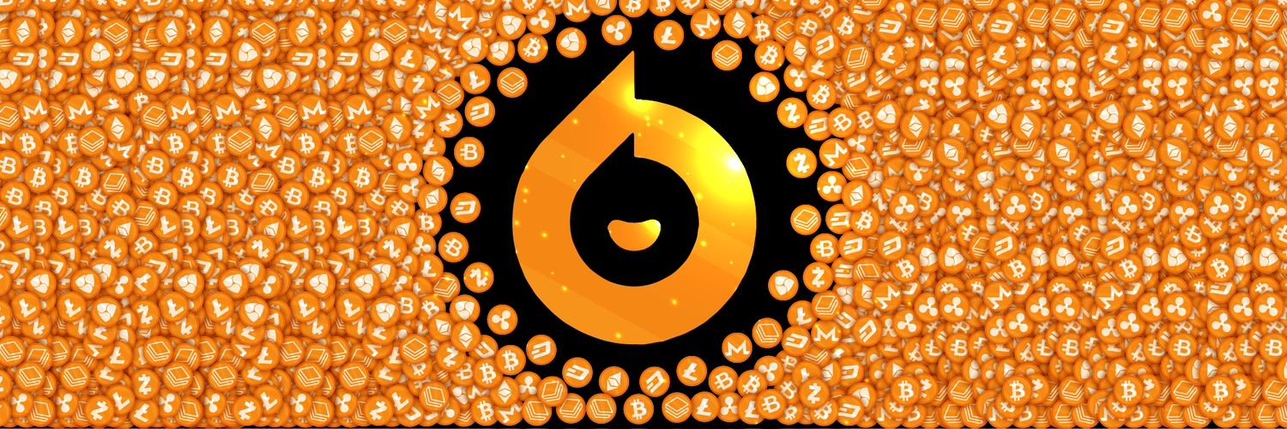
United Solana Degen Clubの価格USDC
JPY
未上場
¥0.0005924JPY
0.00%1D
United Solana Degen Club(USDC)の価格は日本円では¥0.0005924 JPYになります。
United Solana Degen Clubの価格チャート(JPY/USDC)
最終更新:2025-11-26 21:44:04(UTC+0)
USDCからJPYへの交換
USDC
JPY
1 USDC = 0.0005924 JPY。現在の1 United Solana Degen Club(USDC)からJPYへの交換価格は0.0005924です。このレートはあくまで参考としてご活用ください。
Bitgetは、主要取引プラットフォームの中で最も低い取引手数料を提供しています。VIPレベルが高ければ高いほど、より有利なレートが適用されます。
現在のUnited Solana Degen Club価格(JPY)
現在、United Solana Degen Clubの価格は¥0.0005924 JPYで時価総額は¥591,882.39です。United Solana Degen Clubの価格は過去24時間で0.00%下落し、24時間の取引量は¥0.00です。USDC/JPY(United Solana Degen ClubからJPY)の交換レートはリアルタイムで更新されます。
1 United Solana Degen Clubは日本円換算でいくらですか?
現在のUnited Solana Degen Club(USDC)価格は日本円換算で¥0.0005924 JPYです。現在、1 USDCを¥0.0005924、または16,879.95 USDCを¥10で購入できます。過去24時間のUSDCからJPYへの最高価格は-- JPY、USDCからJPYへの最低価格は-- JPYでした。
United Solana Degen Clubの価格は今日上がると思いますか、下がると思いますか?
総投票数:
上昇
0
下落
0
投票データは24時間ごとに更新されます。これは、United Solana Degen Clubの価格動向に関するコミュニティの予測を反映したものであり、投資アドバイスと見なされるべきではありません。
United Solana Degen Clubの市場情報
価格の推移(24時間)
24時間
24時間の最低価格:¥024時間の最高価格:¥0
過去最高値(ATH):
--
価格変動率(24時間):
価格変動率(7日間):
--
価格変動率(1年):
--
時価総額順位:
--
時価総額:
¥591,882.39
完全希薄化の時価総額:
¥591,882.39
24時間取引量:
--
循環供給量:
999.09M USDC
最大供給量:
999.52M USDC
United Solana Degen ClubのAI分析レポート
本日の暗号資産市場のハイライトレポートを見る
United Solana Degen Clubの価格履歴(JPY)
United Solana Degen Clubの価格は、この1年で--を記録しました。直近1年間のJPY建ての最高値は--で、直近1年間のJPY建ての最安値は--でした。
時間価格変動率(%) 最低価格
最低価格 最高価格
最高価格 
 最低価格
最低価格 最高価格
最高価格 
24h0.00%----
7d------
30d------
90d------
1y------
すべての期間----(--, --)--(--, --)
United Solana Degen Clubの最高価格はいくらですか?
USDCの過去最高値(ATH)はJPY換算で--で、に記録されました。United Solana Degen ClubのATHと比較すると、United Solana Degen Clubの現在価格は--下落しています。
United Solana Degen Clubの最安価格はいくらですか?
USDCの過去最安値(ATL)はJPY換算で--で、に記録されました。United Solana Degen ClubのATLと比較すると、United Solana Degen Clubの現在価格は--上昇しています。
United Solana Degen Clubの価格予測
2026年のUSDCの価格はどうなる?
+5%の年間成長率に基づくと、United Solana Degen Club(USDC)の価格は2026年には¥0.0006376に達すると予想されます。今年の予想価格に基づくと、United Solana Degen Clubを投資して保有した場合の累積投資収益率は、2026年末には+5%に達すると予想されます。詳細については、2025年、2026年、2030〜2050年のUnited Solana Degen Club価格予測をご覧ください。2030年のUSDCの価格はどうなる?
+5%の年間成長率に基づくと、2030年にはUnited Solana Degen Club(USDC)の価格は¥0.0007750に達すると予想されます。今年の予想価格に基づくと、United Solana Degen Clubを投資して保有した場合の累積投資収益率は、2030年末には27.63%に到達すると予想されます。詳細については、2025年、2026年、2030〜2050年のUnited Solana Degen Club価格予測をご覧ください。
注目のキャンペーン
United Solana Degen Clubのグローバル価格
現在、United Solana Degen Clubは他の通貨の価値でいくらですか?最終更新:2025-11-26 21:44:04(UTC+0)
USDC から ARS
Argentine Peso
ARS$0.01USDC から CNYChinese Yuan
¥0USDC から RUBRussian Ruble
₽0USDC から USDUnited States Dollar
$0USDC から EUREuro
€0USDC から CADCanadian Dollar
C$0USDC から PKRPakistani Rupee
₨0USDC から SARSaudi Riyal
ر.س0USDC から INRIndian Rupee
₹0USDC から JPYJapanese Yen
¥0USDC から GBPBritish Pound Sterling
£0USDC から BRLBrazilian Real
R$0よくあるご質問
United Solana Degen Clubの現在の価格はいくらですか?
United Solana Degen Clubのライブ価格は¥0(USDC/JPY)で、現在の時価総額は¥591,882.39 JPYです。United Solana Degen Clubの価値は、暗号資産市場の24時間365日休みない動きにより、頻繁に変動します。United Solana Degen Clubのリアルタイムでの現在価格とその履歴データは、Bitgetで閲覧可能です。
United Solana Degen Clubの24時間取引量は?
過去24時間で、United Solana Degen Clubの取引量は¥0.00です。
United Solana Degen Clubの過去最高値はいくらですか?
United Solana Degen Club の過去最高値は--です。この過去最高値は、United Solana Degen Clubがローンチされて以来の最高値です。
BitgetでUnited Solana Degen Clubを購入できますか?
はい、United Solana Degen Clubは現在、Bitgetの取引所で利用できます。より詳細な手順については、お役立ちunited-solana-degen-clubの購入方法 ガイドをご覧ください。
United Solana Degen Clubに投資して安定した収入を得ることはできますか?
もちろん、Bitgetは戦略的取引プラットフォームを提供し、インテリジェントな取引Botで取引を自動化し、利益を得ることができます。
United Solana Degen Clubを最も安く購入できるのはどこですか?
戦略的取引プラットフォームがBitget取引所でご利用いただけるようになりました。Bitgetは、トレーダーが確実に利益を得られるよう、業界トップクラスの取引手数料と流動性を提供しています。
今日の暗号資産価格
暗号資産はどこで購入できますか?
動画セクション - 素早く認証を終えて、素早く取引へ

Bitgetで本人確認(KYC認証)を完了し、詐欺から身を守る方法
1. Bitgetアカウントにログインします。
2. Bitgetにまだアカウントをお持ちでない方は、アカウント作成方法のチュートリアルをご覧ください。
3. プロフィールアイコンにカーソルを合わせ、「未認証」をクリックし、「認証する」をクリックしてください。
4. 発行国または地域と身分証の種類を選択し、指示に従ってください。
5. 「モバイル認証」または「PC」をご希望に応じて選択してください。
6. 個人情報を入力し、身分証明書のコピーを提出し、自撮りで撮影してください。
7. 申請書を提出すれば、本人確認(KYC認証)は完了です。
United Solana Degen Clubを1 JPYで購入
新規Bitgetユーザー向け6,200 USDT相当のウェルカムパック!
今すぐUnited Solana Degen Clubを購入
Bitgetを介してオンラインでUnited Solana Degen Clubを購入することを含む暗号資産投資は、市場リスクを伴います。Bitgetでは、簡単で便利な購入方法を提供しており、取引所で提供している各暗号資産について、ユーザーに十分な情報を提供するよう努力しています。ただし、United Solana Degen Clubの購入によって生じる結果については、当社は責任を負いかねます。このページおよび含まれる情報は、特定の暗号資産を推奨するものではありません。
USDCからJPYへの交換
USDC
JPY
1 USDC = 0.0005924 JPY。現在の1 United Solana Degen Club(USDC)からJPYへの交換価格は0.0005924です。このレートはあくまで参考としてご活用ください。
Bitgetは、主要取引プラットフォームの中で最も低い取引手数料を提供しています。VIPレベルが高ければ高いほど、より有利なレートが適用されます。
Bitgetインサイト

Bpay-News
2時
A trader deposited 1,000,000 $#USDC into Hyperliquid, longing NVDA and shorting GOOGL.
USDC-0.02%

Stacy Muur
6時
Why I’m paying attention to @Sagaxyz__ ↓
The era of Multichain DeFi just went live.
@ColtProtocol and @MustangFinance are now operational on Saga, and this changes the infrastructure game.
1️⃣ What just launched:
> Colt Protocol: Fully-backed stablecoin ($D) with transparent reserves. You can mint it 1:1 with USDC/USDT/USDN/sfrxUSD, then put it to work across the ecosystem or provide liquidity on Oku DEX.
> Mustang Finance: Composable credit built on Liquity V2. Mint $MUST stablecoin against collateral like wETH, yETH, tBTC, SAGA, stATOM, KING, or yUSD. You set your own interest rates and LTV ratios. Minimum loan: 200 MUST.
Together they form Velocity DeFi - Saga's vision where capital flows constantly instead of sitting idle.
2️⃣ Why this matters:
Saga was early with chainlets when everyone was building monolithic L1s. The market finally caught up - modularity and app-chains are now the meta, and Saga's infrastructure is ready.
3️⃣ What's different this cycle:
New chainlets don't launch into a void. SagaEVM is live with real DeFi rails:
• Liquidity Integration Layer - auto-bridges assets across chains
• Uniswap V3 on a dedicated chainlet with gasless trading
• Native composability - borrow on Mustang, use $MUST anywhere instantly
• Strategic integrations with Axelar, Squid, YieldFi, and Evmos
The infrastructure matured: Cosmos SDK, shared sequencers, EVM rollups made this plug-and-play. Developers get sovereignty without sacrificing liquidity or composability.
4️⃣ The actual unlock:
With Colt and Mustang live, you can now:
• Mint backed stablecoins and deploy them across Saga's DeFi ecosystem
• Borrow against blue-chip assets at rates you control
• Earn yield by depositing $MUST into stability pools (75%+ of borrower fees)
• Provide liquidity on Oku with various D-paired pools
This is onchain carry trades made accessible: affordable borrowing + attractive stablecoin yields, fully automated.
5️⃣ What I like about this:
The restraint. Saga isn't claiming L1 dominance - they're positioning as the connective tissue of the modular stack. The layer that lets DeFi, gaming, and AI agents build without friction.
If the scaling narrative shifts from "one chain growing endlessly" to "thousands of specialized chains moving in sync," Saga's infrastructure becomes the plumbing that makes it work.
My position?
Watching with conviction now that the DeFi layer is live.
SAGA-0.78%
D+1.87%

MartyParty_
6時
Stable Coin Mint: 5min ago $500m issued on @solana by $USDC Treasury
USDC-0.02%

Jamfalan
10時
My Bitget Earn Strategy: How I Grow My Crypto Portfolio Consistently
Hello Bitget fam!
Since this campaign is all about sharing our real experiences, I wanted to talk about something that has genuinely changed the way I manage my crypto: Bitget Earn. It has slowly become my favorite way to grow my assets without stress — literally earning for me while I sleep.
Here’s how I use it to build steady passive income.
1. Proof First: My Earnings Snapshot
No long talk — let’s start with the results.
Over the last few months, my strategy with Bitget Earn has been giving me around $180–$250 per month in passive income. Most of that comes from a mix of Flexible Savings and Locked Products.
2. The Products I Use — And Why They Work
I’ve tried different Earn products, but these two always remain the foundation of my portfolio:
• Flexible Savings (USDT/USDC)
This is my “safety net.” I keep funds here for stability and quick access, especially when I want to buy dips. The daily interest may look small, but it builds up beautifully over time.
• Locked Products (BTC/ETH)
This is where I put assets I don’t plan to touch soon. The yields are higher, and I usually pick 30–90 day lock periods.
My trick? Laddering.
Instead of locking everything at once, I spread them out — so something unlocks every 1–2 weeks. That way, I get both high returns and liquidity.
3. How I Allocate My Portfolio
Here’s what my Bitget Earn setup roughly looks like:
40% – Flexible Savings (USDT/USDC) for safety + quick access
35% – Locked BTC/ETH for predictable long-term yield
15% – BGB Earn Products because the APYs are often really attractive
10% – New/Featured Products for testing higher-yield opportunities
4. Tips That Helped Me Earn More
Here’s what I personally do to boost my returns:
Manual Compounding:
I move interest earned from Flexible Savings into Locked Products regularly.
Watch Announcements:
Bitget drops limited-time Earn offers often. Sometimes the APYs are too good to ignore.
Diversify:
Different coins, different products, different lock periods — it reduces risk and keeps earnings stable.
5. A Feature Request for Bitget
One thing I’d really love to see is an Auto-Reinvest/Auto-Compound option for Locked Products.
Being able to automatically roll interest and principal into a new term would make the whole process even smoother.
Final Thoughts
Bitget Earn has shifted my mindset from only active trading to a more stable, long-term wealth-building approach. It’s simple, reliable, and genuinely effective.
I’m curious to learn from others too:
What’s your favorite Bitget Earn product and how do you structure your allocations?
Let’s grow together in the comments!
This balance helps me stay comfortable while still letting my money work nonstop.
BTC+3.28%
BGB+1.40%

BGUSER-AZD5GHGH
11時
DeFi Yield Explained: Where Does the Money Actually Come From?
Introduction
You see them everywhere in DeFi: those tempting, high-percentage APYs. 5%, 15%, even 100%+. It's easy to feel like you've discovered a secret money-printing machine.
But pause for a second and ask the most important question: Where is this money actually coming from?
If you can't answer that, you're not investing—you're gambling. The truth is, DeFi isn't magic. The yield has to come from a real economic activity. The crucial insight for me was realizing that in DeFi, yield isn't created from nothing—it always comes from someone else paying for a service. Once you understand the sources, you can separate sustainable opportunities from risky bubbles.
Let's break it down into three simple sources.
1. Lending Fees (The "Be the Bank" Model)
This is the oldest and most straightforward model in finance.
· What Happens: You deposit your crypto (like USDC or ETH) into a lending protocol like Aave or Compound. Other people borrow it from the pool.
· Where the Yield Comes From: Borrowers pay interest on their loans. A portion of that interest is paid out to you, the depositor.
· Simple Analogy: This is exactly how a traditional bank works. The bank pays you 1% interest on your savings account, but charges someone else 5% for a car loan. The difference is their profit. In DeFi, you are the bank.
The Key Question to Ask: "Is there real borrowing demand for this asset?" If no one wants to borrow it, the yield will be low or unsustainable.
2. Trading Fees (The "Own the Exchange" Model)
This is the model behind Decentralized Exchanges (DEXs) like Uniswap or PancakeSwap.
· What Happens: You provide two tokens (e.g., ETH and USDC) to a "liquidity pool" so that others can trade between them.
· Where the Yield Comes From: Every time a trader swaps one token for another, they pay a small fee (e.g., 0.25%). That fee is distributed to everyone who provided the liquidity.
· Simple Analogy: You're like a part-owner of the New York Stock Exchange. You don't care if stock prices go up or down; you get paid a tiny slice of every single trade that happens.
The Key Question to Ask: "Is this trading pair popular and does it have high volume?" More trades = more fees for you.
3. Protocol Incentives (The "Bonus" Model)
This is the most misunderstood and often risky source of yield.
· What Happens: A new DeFi project needs to attract users and liquidity. To entice you, they pay you a bonus in their own, newly created token on top of any other fees.
· Where the Yield Comes From: The protocol essentially prints its own token and gives it to you. This is a marketing cost for them, designed to bootstrap their ecosystem.
· Simple Analogy: It's like a new bank offering you a $100 cash bonus for opening an account. The $100 isn't coming from bank profits; it's a customer acquisition cost.
The Key Question to Ask: "Is this yield backed by real fees (Source 1 & 2), or is it just a temporary token incentive?" The latter can disappear overnight when the incentives end.
Conclusion: Become a Yield Detective
Now you know the three main sources. Sustainable yield is built on a foundation of real economic activity—people paying interest to borrow or fees to trade.
The next time you see a juicy APY, play detective and ask:
1. Is this from Lending Fees? (Is there borrowing demand?)
2. Is this from Trading Fees? (Is there trading volume?)
3. Or is this just a Protocol Incentive? (Is this temporary?)
Understanding this doesn't just make you a smarter DeFi user; it makes you a safer one. You're no longer chasing a number; you're evaluating a business model.
Now go forth and farm yield wisely.
ETH+2.21%
USDC-0.02%
Bitgetに新規上場された通貨の価格








